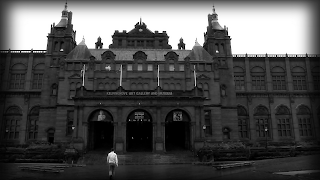You can see the final advert (and my brilliant double-take) here:
https://vimeo.com/55182943
Here are some rendered stills from my video
and the character
and a screenshot of my character
Just as with the st extension, everything was rendered out originally as 32-bit floating point OpenEXR's. This meant that I had to turn of mr Photographic Exposure Control, set the frame buffer to 32-bit and turn the input and output bitmap gamma settings to 1.0... Unfortunately I forgot to set the input gamma to 1.0 from its default of 2.2, but I noticed that the bitmaps weren't the colour that they should be in my material editor, so I add a Color Correction texutre node and adjusted the gamma that way - so it was a bit of extra work, but I'll now remember to set the bitmap input gamma to 1.0.
The character's rig is my first attempt at creating a custom rig from Max's Bones, other rigs I've done before have been with CAT. Cat has some fairly well documented bugs and they always seem to appear when you least want them to, by creating my own custom rig I knew that it was going to be stable and give me all the control that I wanted.
I textured my character in a combination of Mudbox and Photoshop; first off I'd lay down some base colours in Mudbox and then use Photoshop Mixer Brush Tool to give it that hand smudge look which I like.
As for the bathroom itself, I experimented with a cloth simulation for the towels and I had hoped to add Hair & Fur to them but it took a very long time to render and it also gave me some strang shadows which I really didn't like the look of. But, that's something for me to work on over Christmas.






